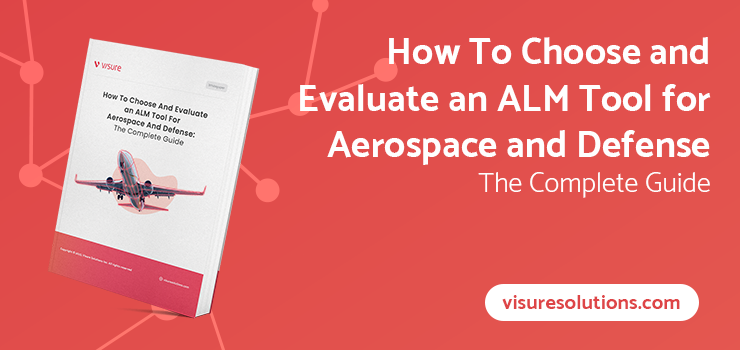DO-178C Guide: Introduction to RTCA DO-178 Certification
Airborne Software & Systems Standard Certifications Explained
Table of Contents
Introduction
In the aviation industry, the safety and reliability of airborne software and systems are of paramount importance. To ensure the highest level of quality, performance, and compliance with regulatory standards, various certifications are established. These certifications provide assurance to manufacturers, operators, and passengers that the software and systems used in aircraft have undergone rigorous testing and meet specific industry standards. In this article, we will delve into the world of airborne software and systems standard certifications, exploring their significance and the requirements they entail.
DO-178C: Software Considerations in Airborne Systems and Equipment Certification
Overview
DO-178C is a widely recognized standard for the certification of airborne software used in commercial and military aircraft. It is developed by RTCA (Radio Technical Commission for Aeronautics) in collaboration with EUROCAE (European Organization for Civil Aviation Equipment). DO-178C establishes guidelines for the development and verification of software to ensure its safety, reliability, and compliance with regulatory requirements.
Key Objectives and Criteria
DO-178C outlines several key objectives and criteria that must be met during the software development process. These include requirements traceability, software design, verification, configuration management, and documentation. The standard defines five levels of software criticality, ranging from Level A (most critical) to Level E (least critical), with each level requiring specific processes and documentation.
Certification Process
The certification process for DO-178C involves several stages, including planning, development, verification, and configuration management. It requires the establishment of a robust software development life cycle (SDLC) process, rigorous testing, and the generation of comprehensive documentation, including plans, procedures, and reports. The certification process also involves an extensive review by regulatory authorities to ensure compliance with the standard’s requirements.
DO-254: Design Assurance Guidance for Airborne Electronic Hardware
Overview
While DO-178C focuses on software, DO-254 addresses the certification of airborne electronic hardware, such as integrated circuits, field programmable gate arrays (FPGAs), and other electronic components. This standard provides guidelines for the development and verification of electronic hardware to ensure its safety, reliability, and compliance with regulatory requirements.
Key Objectives and Criteria
DO-254 establishes objectives and criteria for the design, verification, and validation of airborne electronic hardware. These include requirements capture, traceability, design process, configuration management, and documentation. Similar to DO-178C, DO-254 defines different levels of hardware criticality, with each level requiring specific processes and documentation.
Certification Process
The certification process for DO-254 involves planning, development, verification, and configuration management activities, similar to DO-178C. It requires the establishment of a hardware development life cycle (HDLC) process, comprehensive testing, and the generation of necessary documentation. The certification process includes a review by regulatory authorities to ensure compliance with the standard’s requirements.
ARP4754A: Guidelines for Development of Civil Aircraft and Systems
Overview
ARP4754A is a system-level standard that addresses the development and certification of civil aircraft and their systems. It provides guidelines for the entire aircraft development life cycle, including requirements engineering, system architecture, verification, validation, and integration processes. ARP4754A emphasizes the importance of a systematic and integrated approach to ensure safety and reliability.
Key Objectives and Criteria
ARP4754A defines objectives and criteria for the development of aircraft and systems. These include requirements definition, architectural design, system verification, and system validation. The standard emphasizes the need for a thorough understanding of system safety, performance, and functional requirements, as well as the establishment of traceability throughout the development process.
Certification Process
The certification process for ARP4754A involves various stages, including system requirements analysis, architectural design, integration, verification, and validation. It requires the development of comprehensive system-level documentation, including system requirements documents (SRDs), system architecture documents (SADs), and system validation plans (SVPs). Regulatory authorities conduct a thorough review to ensure compliance with the standard’s requirements.
Conclusion
Airborne software and systems standard certifications play a crucial role in ensuring the safety, reliability, and compliance of aircraft software and hardware. DO-178C and DO-254 provide guidelines for the development and certification of software and electronic hardware, respectively. ARP4754A focuses on the overall development and certification of civil aircraft and their systems. These certifications require adherence to rigorous processes, comprehensive testing, and the generation of detailed documentation. By meeting these standards, manufacturers, and operators can instill confidence in the reliability and safety of their airborne software and systems, ultimately benefiting passengers and the aviation industry as a whole.
Don’t forget to share this post!
Start Gaining End-to-End Traceability Across Your Projects with Visure Today
Start 30-day Free Trial Today!



